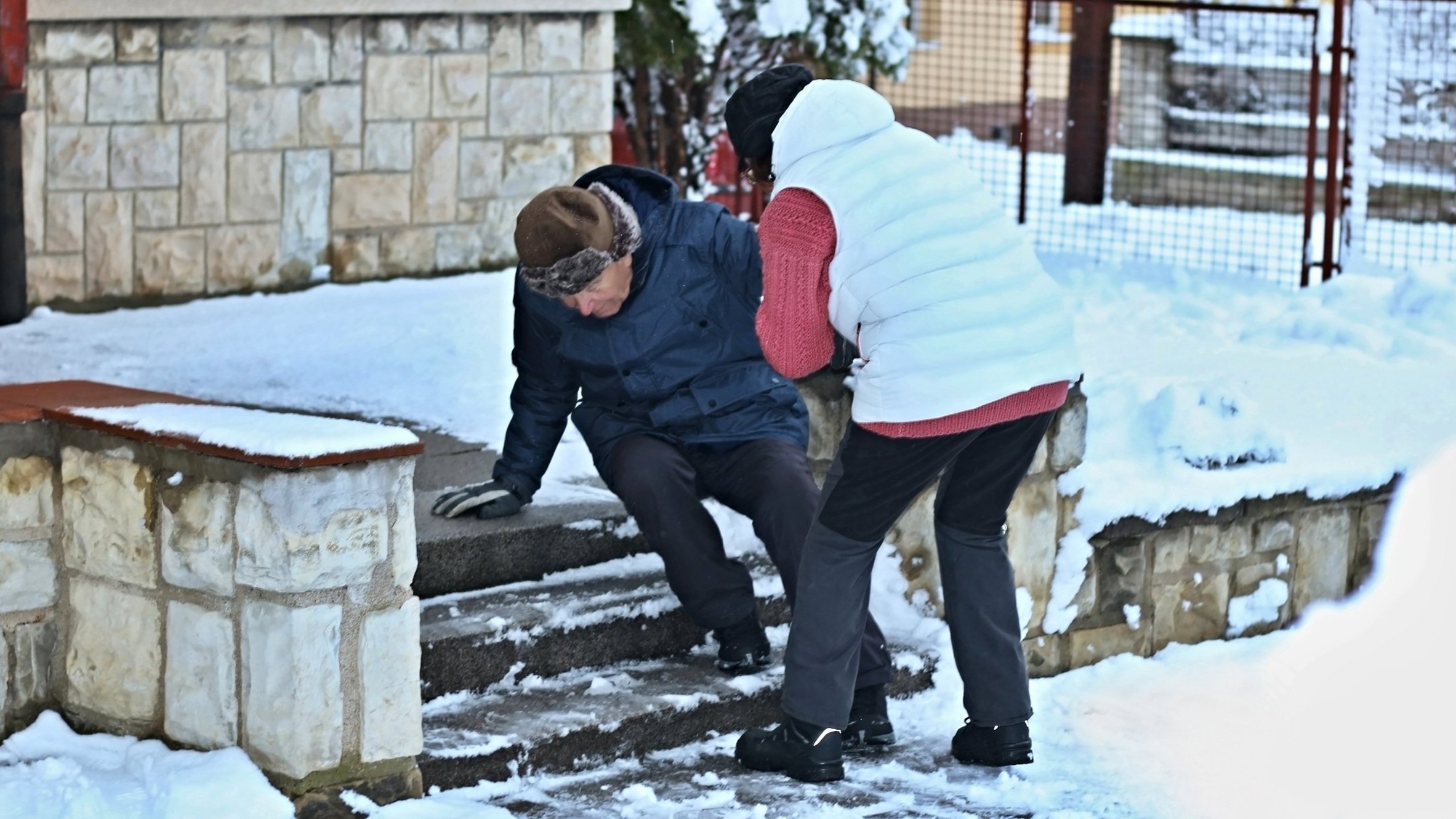Winter Wellness: Fall Prevention and Recovery
As the winter months roll in, so does the potential for slips and falls, particularly among those who struggle with dizziness and balance issues. For individuals of all ages, navigating icy sidewalks and snowy paths can pose significant challenges.
For these patients, leaving home during the winter months may be especially challenging, but sometimes can’t be helped. For the elderly also, the winter months can leave them at risk of injury due to icy sidewalks or driveways. Let’s talk about how to prevent falls in the winter months after inclement weather, and what to do if you do fall, how to recover and how concierge physical therapy can help you get back on your feet!
Fall Prevention Strategies
Winter weather brings about a unique set of challenges, especially when it comes to mobility. Slippery surfaces, hidden ice patches, and reduced visibility can contribute to an increased risk of falls. For individuals with dizziness or balance issues, these hazards become even more pronounced. Here are five ways you can prevent falls after inclement weather:
Footwear Matters: We recommend appropriate winter footwear with good traction to help prevent slips. Opt for shoes with slip-resistant soles and proper ankle support.
Assistive Devices: Do you require an assistive device such as a cane or walker? A Physical Therapist can help ensure that these devices are properly adjusted and provide the necessary support on uneven or slippery surfaces.
Home Modifications: Maintain a clear and well-lit pathway at home. Installing handrails, removing clutter, and using non-slip mats can help prevent falls after inclement weather. Also, be sure to get support to clear walkways and driveways if needed from a neighbor or family member.
Exercise and Strengthening: Utilize a personalized exercise program to enhance strength, flexibility, and overall balance. A Physical Therapist can help target specific muscle groups that can significantly improve stability, reducing the likelihood of falls. Movements like side steps and toe taps can be effective in strength work and preventing falls.
Other winter injuries can be the result of straining back or shoulder muscles shoveling, of course from other winter activities (even running on snowy sidewalks!). You can always prevent injuries from these activities by:
Warm-up your muscles before shoveling by stretching and doing light exercises.
Use a shovel with an ergonomic handle and a lightweight design to minimize strain.
Push the snow instead of lifting whenever possible. If lifting is necessary, remember to bend from the knees and use your legs rather than your back.
Take frequent breaks to prevent overexertion, and remember to stay hydrated.
The Role of Physical Therapy in the Event of a Fall
Early Intervention and Assessment: Following a fall, early intervention is crucial. Getting an assessment post-fall to identify the extent of injuries and develop a personalized recovery plan tailored to your unique needs.
Targeted Rehabilitation Exercises: Implement targeted exercises to address specific areas affected by the fall. Whether it's strengthening weakened muscles, improving joint mobility, or enhancing balance, rehabilitation exercises play a key role in the recovery process.
Pain Management Strategies: Addressing pain is an integral part of the recovery journey. Utilize a combination of manual therapy, modalities, and targeted exercises to manage pain levels and promote a more comfortable healing process.
Gradual Progression and Monitoring: Gradually progress rehabilitation exercises to challenge patients while ensuring their safety. Regular monitoring of progress and regular check-ins of our patients allows for adjustments to the treatment plan, ensuring that recovery remains on track.
Functional Movement Training: Focus on functional movement training to help patients regain the ability to perform daily activities with confidence. This approach bridges the gap between rehabilitation exercises and real-world scenarios, promoting a seamless transition back to daily life.
Recovering from a fall is a journey that requires comprehensive support, and physical therapy plays a pivotal role in this process. By combining effective fall prevention strategies with targeted rehabilitation, patients can not only bounce back from injuries but also build strength and resilience to reduce the risk of future falls. Our commitment is to guide and support patients on their path to recovery, empowering them to regain control and confidence in their movements. As the winter brings its own unique set of challenges, should you or a loved one suffer an injury, get in touch to learn how our concierge physical therapy services can help get you back on your feet without the need to trek into an office. Get in touch to learn more!

